NeXT
Veteran Member
I’m a fan of Magneto-optical technology. I’m just going to put that out there right now.
It’s a fantastic medium. It’s amazingly rugged, it predated the compact disc and as opposed to a CD-R or a floppy I can assure you the data on a MO will still be there 100 years from now. Minidisc is the ultimate and perhaps the last consumer form of the Magneto Optical Disk. By the early 21st century it rapidly fell out of use in favor of WORM tape technologies and larger capacity hard disks. Minidiscs held on until 2013 when the era of cheap and high capacity flash-based recorders and MP3 players finally did them in completely. In the early days however Sony did attempt to keep to the data-based roots that MO was created on. The official name for this was called MD Data.

It was announced in 1993 and initially you could purchase two different models of drives. An internal model (MDM-111) and a portable model (MDH-10). Also available were a variety of devices from cameras (EG: Sharp's MD-PS1 and Sony's DSC-MD1) to image processors (EG: Sony's DPA-300 and DKR-700) to Digital Document Solutions (EG: Sony's PDF-5 and PDF-V55) that utilized MD Data technology for storing images and information. Each cartridge could hold up to 140mb. The main drawback however was that audio minidiscs and MD Data cartridges could not be interchanged, even if they looked physically identical. This was a major drawback as regular minidiscs cost less than MD Data cartridges. Ten years later this problem was rectified with the Hi-MD format units which now interfaced using USB and store up to 305mb on a traditional audio cartridge or 1gb on the Hi-MD cartridges but by then it was too late and no matter how popular the idea of storing data on small MO cartridges looked in The Matrix, flash drives were on the horizon and the era of magnetic removable medium on the whole was about to end.
I’ve been chasing an MD Data storage device for many, many years. Google’s image search has shown that just almost no photographs exist of the drives or anything. Even on multiple trips to Tokyo and Akihabara it was pretty obvious that even in Japan this was not a popular way to store stuff. Finally two weeks ago a member on another forum mentioned he had one and it was for sale. A few photographs were shown and it seemed to be otherwise complete. A quick transaction later ($200 CAD shipped, OUCH!) and it was in the mail. Yesterday it finally came in and without further adieu, here she is:
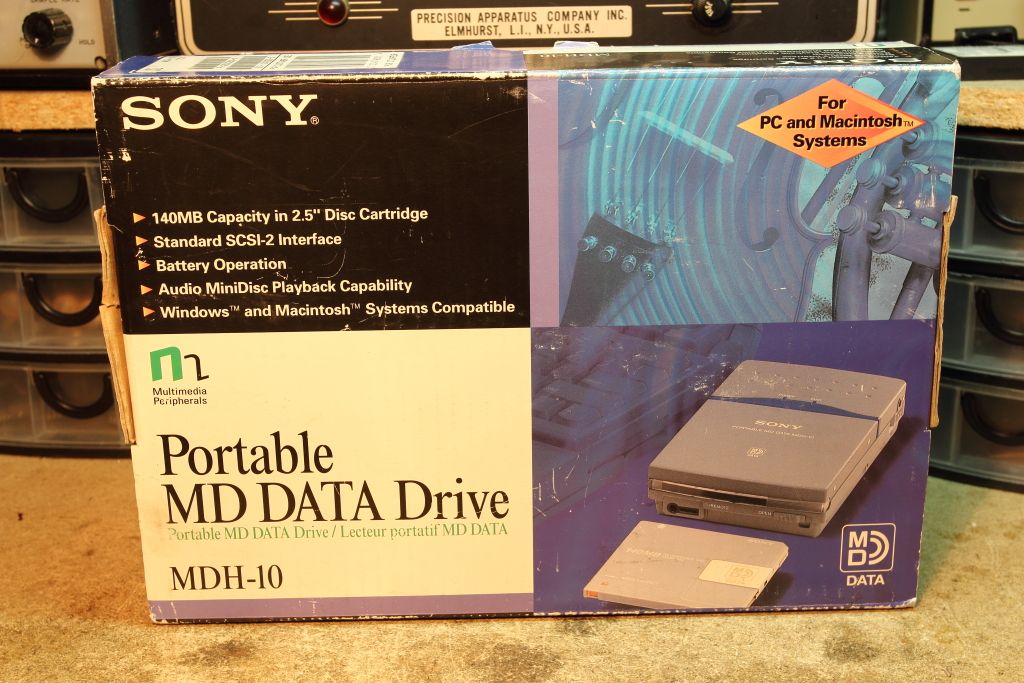
>>IMAGE<<
>>IMAGE<<
It was boxed. That was totally unexpected. The packaging completely in English so it was one of the models that briefly saw sales in the states. Note the pictured SCSI connector on the back and how it states it’s to scale. I can only assume this was done so that if you were in doubt you could bring a SCSI cable and verify you had what you needed.
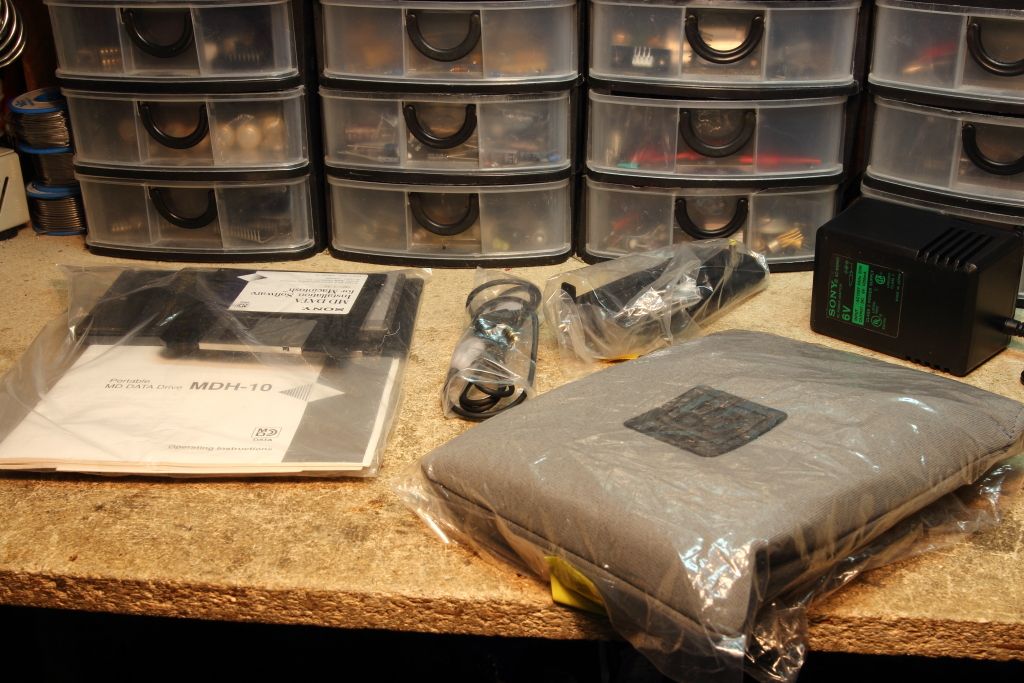
Inside the kit was probably very lightly used. What was missing however was the pair of headphones and the original remote control but there was a replacement stuffed into one of the plastic bags.
>>IMAGE<<
The documentation was complete. Along with the safety pamphlet, registration card (I wonder if that contest is still going) and the manual itself there was a leaflet inside the manual with additional instructions on how to install the Macintosh drivers.
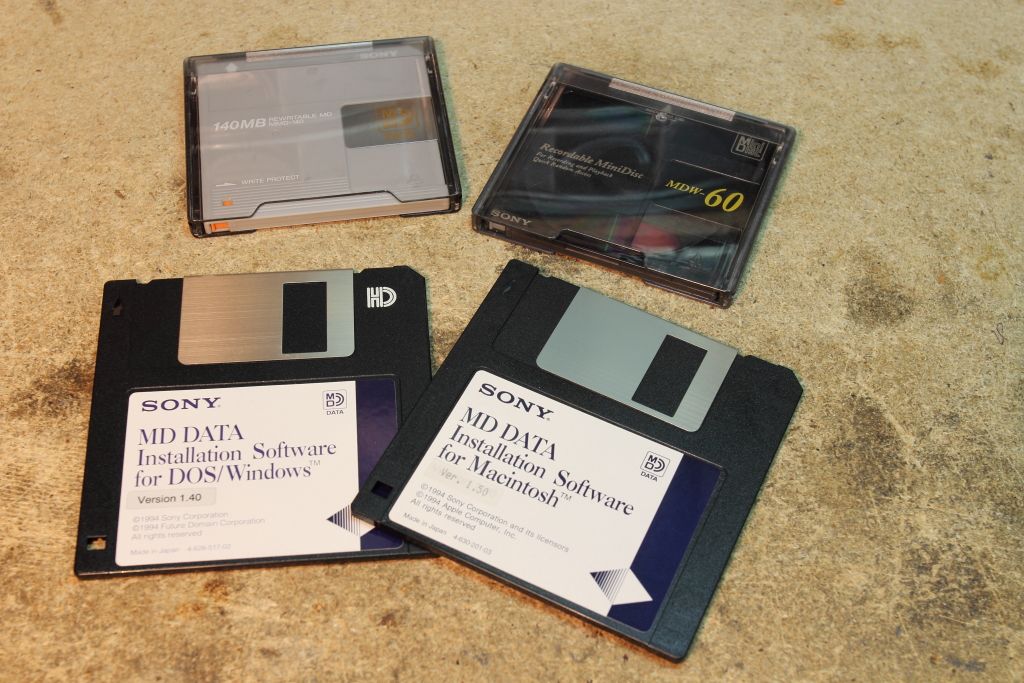
Also included was TWO MD data cartridges (I was using the other when I took the photo), one audio cartridge and the two floppies that contained both the Mac OS and DOS/Windows drivers. Both floppies have since been imaged.
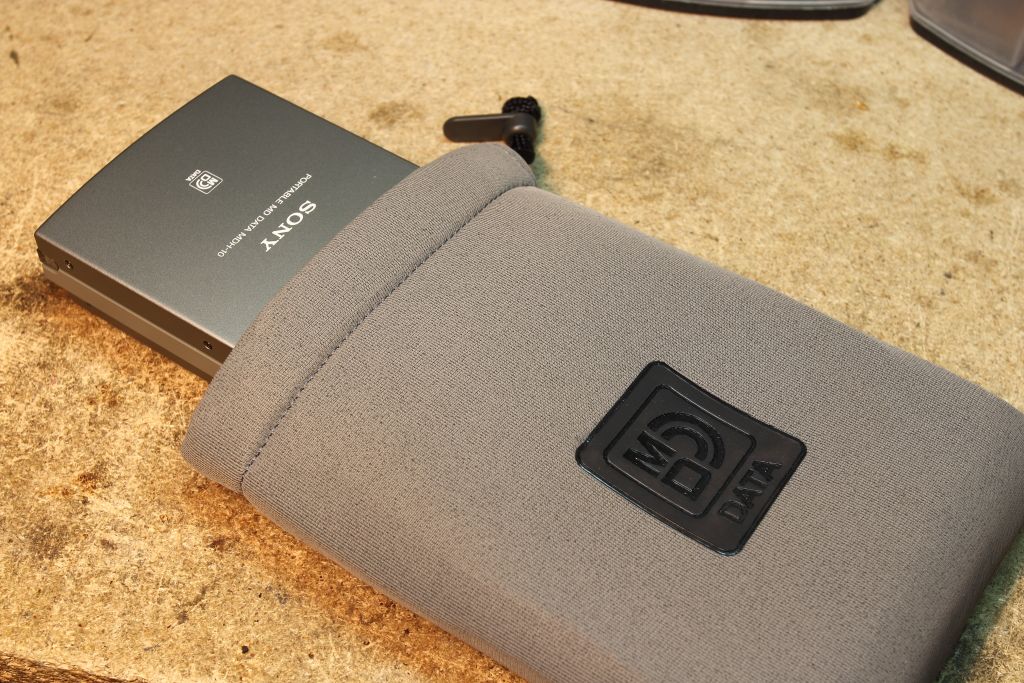
Finally there was the drive itself which came in its own carrying bag. Found inside the drive was the LIP-12 rechargeable Lithium battery.
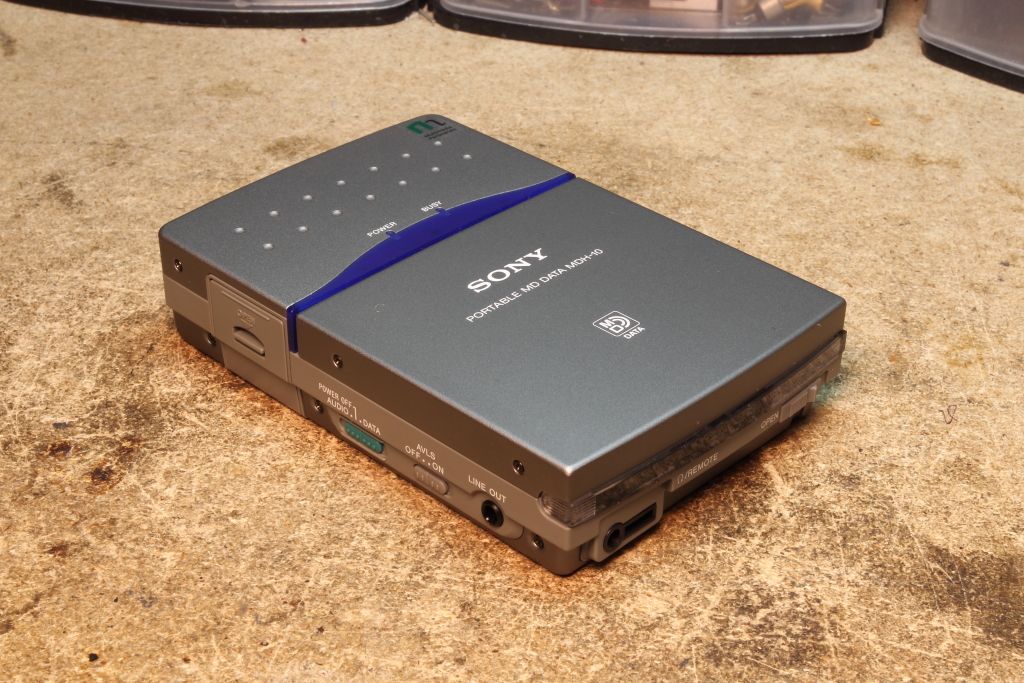
>>IMAGE<<
>>IMAGE<<
Unfortunately my battery was very dead so I could only test it using the AC adapter which DID work. I first fed it one of my audio Minidiscs and plugged in the remote and a pair of headphones. While it sounded great and the remote controls worked fine (did I mention the drive locks the eject slider when it’s in use?) the LCD on the remote displayed nothing. I dug out a few other remotes and none of them worked with the unit either but they were receiving power. Hmm. I wonder what is up….
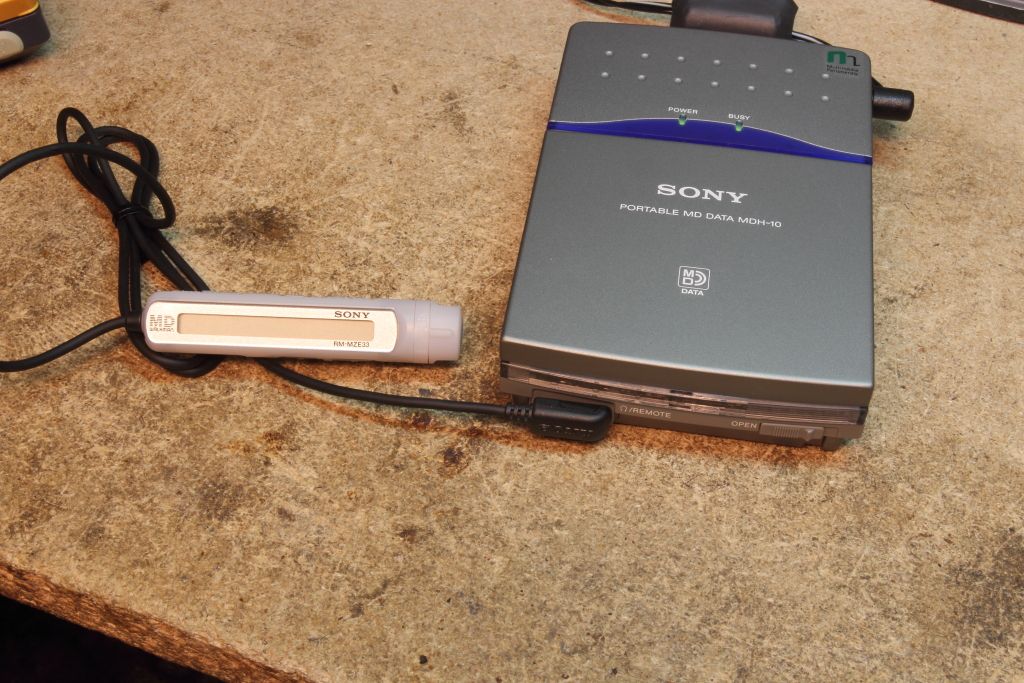
>>IMAGE<<
Also included was a sidecar that clipped in and latched firmly to the side of the unit with a screw and held three AA batteries. Presumably this is for enabling extended use when you were not plugged into the wall.
Finally I had to get it over with. I had to plug it into a computer. Sony sold their own optional RMO-K600 PCMCIA SCSI-2 card but on hand I had an Adaptec 1450B that would work just as well.

For the test the drivers and tools were loaded onto my equally Japanese IBM PC110. At this point I was warned that access to the drive through Windows would not work (bit it would be visible) without Adaptec’s ASPI driver’s loaded which I currently don’t have handy but as I found, if you make mdmgr.exe and mdfsex.exe load after the PCMCIA card’s driver is loaded you can use the drive fine under MS-DOS.
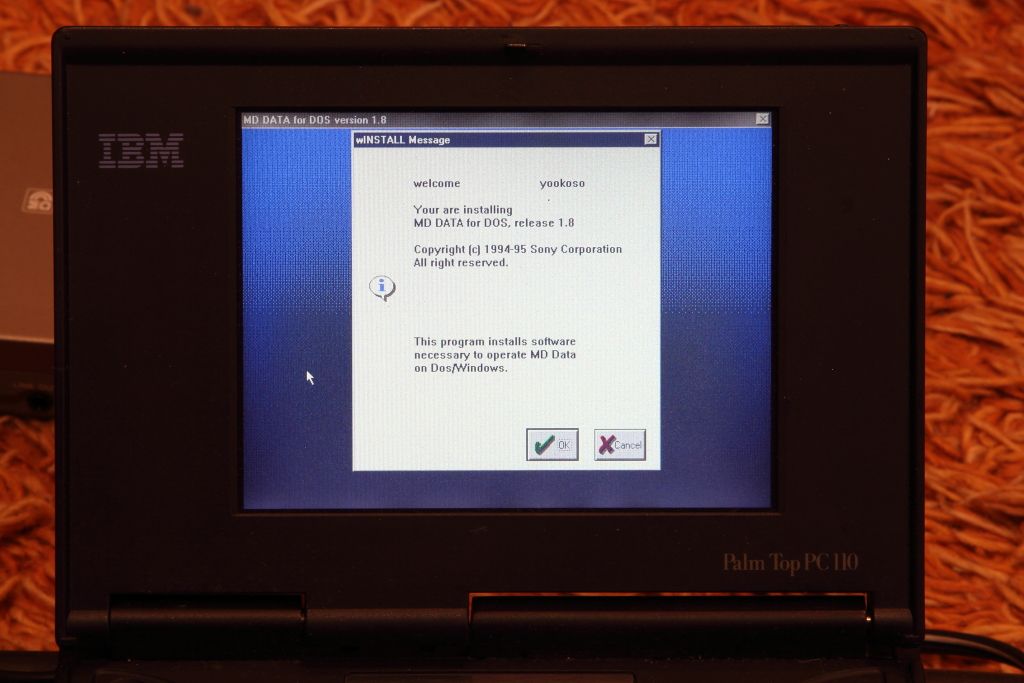
>>IMAGE<<
>>IMAGE<<
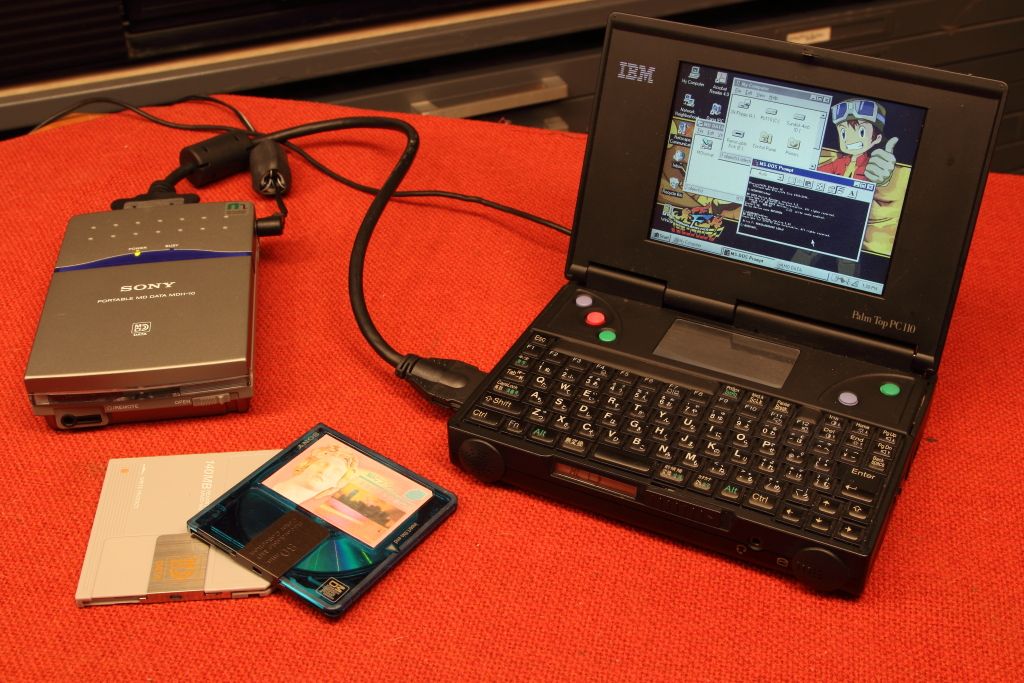
Overall it's a great looking product but the obscurity of it isn't made any better by what I've discovered about it so far. mdfsex.exe pretty much confirms that the cartridges do NOT use a system native filesystem scheme. There's a layer of translation. Perhaps that is why you cannot use regular cartridges for data. Time will tell as I continue messing with this but for now I'm glad I've scratched this particular itch.
It’s a fantastic medium. It’s amazingly rugged, it predated the compact disc and as opposed to a CD-R or a floppy I can assure you the data on a MO will still be there 100 years from now. Minidisc is the ultimate and perhaps the last consumer form of the Magneto Optical Disk. By the early 21st century it rapidly fell out of use in favor of WORM tape technologies and larger capacity hard disks. Minidiscs held on until 2013 when the era of cheap and high capacity flash-based recorders and MP3 players finally did them in completely. In the early days however Sony did attempt to keep to the data-based roots that MO was created on. The official name for this was called MD Data.

It was announced in 1993 and initially you could purchase two different models of drives. An internal model (MDM-111) and a portable model (MDH-10). Also available were a variety of devices from cameras (EG: Sharp's MD-PS1 and Sony's DSC-MD1) to image processors (EG: Sony's DPA-300 and DKR-700) to Digital Document Solutions (EG: Sony's PDF-5 and PDF-V55) that utilized MD Data technology for storing images and information. Each cartridge could hold up to 140mb. The main drawback however was that audio minidiscs and MD Data cartridges could not be interchanged, even if they looked physically identical. This was a major drawback as regular minidiscs cost less than MD Data cartridges. Ten years later this problem was rectified with the Hi-MD format units which now interfaced using USB and store up to 305mb on a traditional audio cartridge or 1gb on the Hi-MD cartridges but by then it was too late and no matter how popular the idea of storing data on small MO cartridges looked in The Matrix, flash drives were on the horizon and the era of magnetic removable medium on the whole was about to end.
I’ve been chasing an MD Data storage device for many, many years. Google’s image search has shown that just almost no photographs exist of the drives or anything. Even on multiple trips to Tokyo and Akihabara it was pretty obvious that even in Japan this was not a popular way to store stuff. Finally two weeks ago a member on another forum mentioned he had one and it was for sale. A few photographs were shown and it seemed to be otherwise complete. A quick transaction later ($200 CAD shipped, OUCH!) and it was in the mail. Yesterday it finally came in and without further adieu, here she is:

>>IMAGE<<
>>IMAGE<<
It was boxed. That was totally unexpected. The packaging completely in English so it was one of the models that briefly saw sales in the states. Note the pictured SCSI connector on the back and how it states it’s to scale. I can only assume this was done so that if you were in doubt you could bring a SCSI cable and verify you had what you needed.

Inside the kit was probably very lightly used. What was missing however was the pair of headphones and the original remote control but there was a replacement stuffed into one of the plastic bags.
>>IMAGE<<
The documentation was complete. Along with the safety pamphlet, registration card (I wonder if that contest is still going) and the manual itself there was a leaflet inside the manual with additional instructions on how to install the Macintosh drivers.

Also included was TWO MD data cartridges (I was using the other when I took the photo), one audio cartridge and the two floppies that contained both the Mac OS and DOS/Windows drivers. Both floppies have since been imaged.

Finally there was the drive itself which came in its own carrying bag. Found inside the drive was the LIP-12 rechargeable Lithium battery.

>>IMAGE<<
>>IMAGE<<
Unfortunately my battery was very dead so I could only test it using the AC adapter which DID work. I first fed it one of my audio Minidiscs and plugged in the remote and a pair of headphones. While it sounded great and the remote controls worked fine (did I mention the drive locks the eject slider when it’s in use?) the LCD on the remote displayed nothing. I dug out a few other remotes and none of them worked with the unit either but they were receiving power. Hmm. I wonder what is up….

>>IMAGE<<
Also included was a sidecar that clipped in and latched firmly to the side of the unit with a screw and held three AA batteries. Presumably this is for enabling extended use when you were not plugged into the wall.
Finally I had to get it over with. I had to plug it into a computer. Sony sold their own optional RMO-K600 PCMCIA SCSI-2 card but on hand I had an Adaptec 1450B that would work just as well.

For the test the drivers and tools were loaded onto my equally Japanese IBM PC110. At this point I was warned that access to the drive through Windows would not work (bit it would be visible) without Adaptec’s ASPI driver’s loaded which I currently don’t have handy but as I found, if you make mdmgr.exe and mdfsex.exe load after the PCMCIA card’s driver is loaded you can use the drive fine under MS-DOS.

>>IMAGE<<
>>IMAGE<<

Overall it's a great looking product but the obscurity of it isn't made any better by what I've discovered about it so far. mdfsex.exe pretty much confirms that the cartridges do NOT use a system native filesystem scheme. There's a layer of translation. Perhaps that is why you cannot use regular cartridges for data. Time will tell as I continue messing with this but for now I'm glad I've scratched this particular itch.
